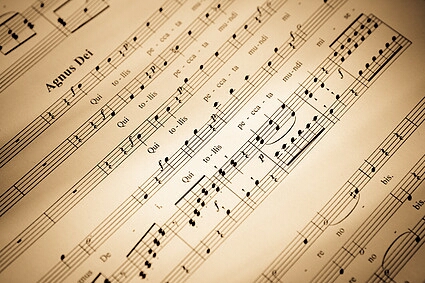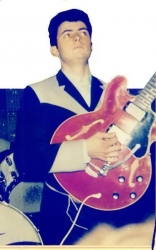Violin – a musical instrument
 The history of music believes that the violin in its most perfect form originated in the XVI century. By that time, all stringed instruments that had been active throughout the Middle Ages were already known. They were arranged in a certain order and the scientists of that time were more or less likely to have known their entire pedigree. Their number was immense and now there is no need to delve into the depths of this business.
The history of music believes that the violin in its most perfect form originated in the XVI century. By that time, all stringed instruments that had been active throughout the Middle Ages were already known. They were arranged in a certain order and the scientists of that time were more or less likely to have known their entire pedigree. Their number was immense and now there is no need to delve into the depths of this business.
The newest researchers have concluded that the violin is by no means a reduced “viol and da gamba.” Moreover, it has been established with sufficient accuracy that both these types of tools in their device have features that are sharply different from each other. All the instruments related to the Viola da Gamba had a flat back, flat edges, a fretboard divided by a fretboard, a head less often in the form of a trefoil and more often with a beast or human head, cutouts on the upper surface of the instrument in the outlines of the Latin letter “C”, and finally tuning the strings by quarts and thirds. In contrast, “viola da braccio”, as the immediate predecessor of the modern violin, had a quint tuning of the strings, a convex back, edges slightly raised, a neck without any frets, a curl-shaped head and cutouts or “efy” in the outline of facing each other lower-case Latin f, italicized.
This circumstance led to the fact that the family of actual viols was composed of a gradual reduction of the gamba. Thus, the full composition of the old “quartet” or “quintet”, consisting of only viols of various sizes, appeared. But, along with the emergence of a full family of viols, the instrument developed and improved, which had all the distinctive and most characteristic features of a modern violin. And this instrument, in fact, is not even a “manual viola” in the literal meaning of the word, but the so-called “manual lyre”, which, as a folk instrument of the Slavic lands, formed the basis of the modern family of violins. The great Raphael (1483-1520) in one of his paintings dating back to 1503, gives an excellent image of this tool. Contemplating it, there is not the slightest doubt that in order to completely transform the “hand lyre” into a perfect violin of modernity, very little remains. The only difference that distinguishes Raphael’s image from the modern violin is only in the number of strings, five of them with two bass, and in the outline of the pegs, strongly resembling with their appearance the pegs of an old viola.
From this time on, the testimonies multiply with incredible speed. Insignificant corrections that could be made to the image of the old “lira da bracho” would give her the most perfect resemblance to the modern violin. These testimonies in the form of an image of an old violin belong already to 1516 and to 1530, when a Basel bookseller chose an old violin as his trademark. At the same time, the word “violin”, in his French style violon, first appeared in French dictionaries of the beginning of the XVI century. Henri Pryunier (1886–1942) asserts that as early as 1529 this word was contained in some of the business papers of the time. Nevertheless, indications that the concept of “violon” appeared around 1490 should be considered dubious. In Italy, the word violonista in the meaning of the performer on the viola began to appear from 1462, while the very word violino, in the sense of “violin,” came into use only a hundred years later, when it became generalized. The British only in 1555 adopted the French inscription of the word, which, however, after three years replaced the completely English “violin”.
In Russia, according to the testimony of the most ancient monuments, stringed instruments were known for a very long time, but none of them developed enough to later become a symphonic orchestra instrument. The oldest old Russian string instrument is a horn. In its purest form, it had an oval, somewhat pear-shaped wooden body, with three strings stretched over it. They played on the whistle with an arched bow, nothing in common with the modern one that did not have. The time when the whistle was born, is not exactly known, but there is an assumption that the “whistle” appeared in Russia along with the penetration of the “eastern” instruments – domra, surny and cloves. This time is usually determined by the second half of the XIV and the beginning of the XV century. When the “violins” in the literal meaning of the word appeared is difficult to say. It is only known with certainty that the first mentions of the violin in the alphabet of the XVI-XVII centuries “equally show that the interpreters had no idea about it”. In any case, according to PF Findseizen (1868-1928), this instrument was not yet known in the domestic and social life of Moscow Russia, and the first violins in their fully completed form appeared in Moscow, apparently, only at the beginning XVIII century.



